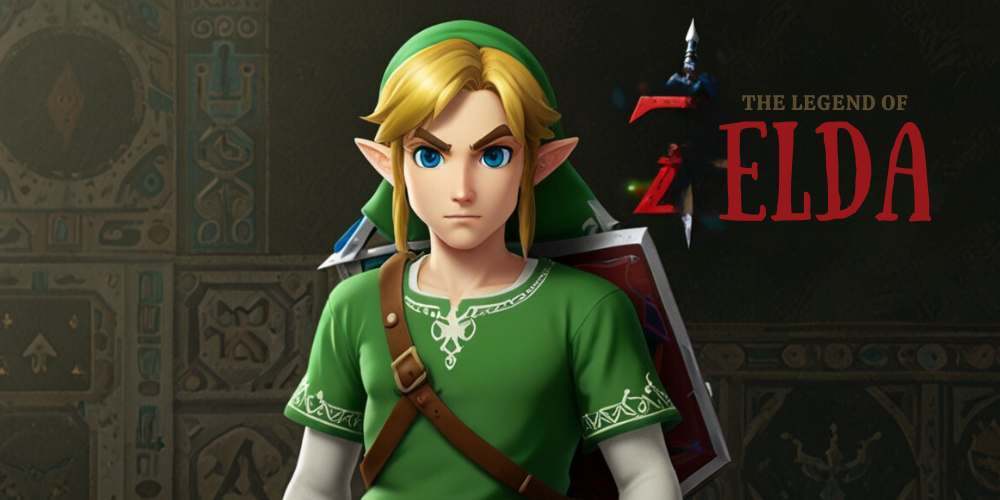The Dawn of Digital Artistry in Gaming
The origins of video games can be attributed to the simple imagery of blocky 2D characters, a signature of the sector's initial stages. In the early days, gaming consoles and computers lacked the computational power and sophisticated hardware necessary to render anything more intricate than elementary two-dimensional images on the screen. As a result, the visual simplicity provided the backdrop against which pioneering titles like "Pong," "Space Invaders," and the ever-iconic "Super Mario Bros." came to life.
These games unfolded entirely on a flat plane, with characters and environments meticulously composed of colored pixels. Although these pixels offered a charming aesthetic, they also imposed significant limitations on graphic fidelity. The creative constraints forced developers to ingeniously work within a very restricted palette ingeniously, pushing the bounds of imagination and technical skill. Despite these limitations, the simplistic graphics of that era laid a crucial foundation for the video game industry, shaping its evolution and the future innovations in visual design and gameplay that we witness today.
A New Dimension for Gameplay and Exploration

With the flow of time and the ever-accelerating pace of technological innovation, the ambitions and creative horizons of video game developers broadened dramatically. This was particularly evident during a transformative period of gaming history that took off in the late 1980s and gained significant momentum throughout the early 1990s. A notable milestone of this era was marked by the introduction of advanced visual rendering techniques, as seen in groundbreaking titles like "Star Fox" for the Super Nintendo Entertainment System (SNES).
These games began offering players an immersive pseudo-3D experience that was achieved through sophisticated methods such as parallax scrolling and Mode 7 graphics. These techniques created a profound illusion of depth and movement, allowing for a more dynamic and engrossing gaming experience that teased the untold potential of three-dimensional gameplay.
Despite these innovative strides, it was not until the advent of next-generation gaming consoles that were specifically engineered with capabilities for true three-dimensional processing that game developers were able to push beyond the limitations of earlier systems and step into a realm of virtually unlimited creative possibilities. With the release of powerhouse systems such as the Sony PlayStation, Sega Saturn, and the iconic Nintendo 64, the game development community was greeted with the tools necessary to construct rich, fully realized 3D worlds.
This leap in technological prowess dissolved previous barriers and set the stage for an explosion of three-dimensional games that would redefine the industry. Developers could now sculpt intricate environments, conjure compelling characters that moved and interacted with a newfound fluidity, and craft narratives that were brought to life within the boundless confines of these virtual landscapes. These advancements set the benchmark for what was possible in interactive entertainment, and to this day, they continue to influence the aspirations and achievements of game designers around the world.
Revolutionizing Visual Storytelling

The transition from 2D to 3D was more than an aesthetic advancement; it transformed narrative possibilities. With the advent of three dimensions, game worlds became more lifelike, offering a sense of depth and immersion that flat sprites could not achieve. Series such as "The Legend of Zelda" transitioned from top-view dungeons to sprawling landscapes in "Ocarina of Time," enabling players to experience epic quests with newfound realism.
The Technical Hurdles Along the Way
Moving into 3D space presented significant technical challenges for developers accustomed to working in two dimensions. The complexity involved in rendering three-dimensional environments required innovative programming solutions and more powerful hardware. Early 3D games battled with issues such as texture warping, clipping glitches, and a lack of smooth frame rates—challenges that would be resolved over time with better tools and understanding.
Impact on Game Design Philosophy
This momentous shift also altered the way games were designed. Level architecture transformed drastically—the blocky corridors of Wolfenstein evolved into expansive arenas showcased in newer franchises like "Tomb Raider." This dimensional leap necessitated different approaches to gameplay mechanics, such as camera control systems—an area that has seen constant evolution from its inception till today's sophisticated algorithms.
Retro Resurgence: Appreciating Origins amidst Modern Sophistication
In the realm of video game development, the past few years have witnessed an intriguing juxtaposition: on the one hand, the gaming industry has pushed the boundaries of visual realism with every successive advancement in graphics technology, resulting in near-photorealistic environments and character models that are incredibly lifelike. The fidelity of these graphics is such that they blur the line between virtual and reality, allowing players to immerse themselves in digital worlds that are breathtakingly vivid and complex. On the other hand, there's been a surprising and somewhat counterintuitive resurgence in the popularity of retro aesthetics, a trend that harkens back to the simpler times of gaming's yesteryears when pixel art reigned supreme.
This revival of retro visuals has been embraced with open arms, especially within the indie gaming scene. Indie developers have found particular resonance with the pixel art style, which calls to mind the nostalgic era of 8-bit and 16-bit gaming consoles. The reasons for this embrace are manifold. There is, of course, the cultural cachet that pixel art holds—a certain retro cool that appeals to gamers who grew up in the 80s and 90s as well as to younger generations who find novelty and charm in the throwback style.
Additionally, from a pragmatic perspective, developing games with pixel art can be significantly more cost-effective than aiming for hyper-realistic graphics. Independent studios often operate with tight budgets and limited resources, and crafting simpler, stylized graphics is a practical way to produce visually appealing games without the need for a large team or costly software.

Nevertheless, many of these indie developers are not content to solely replicate the graphics of yore; they are innovators, finding ways to enhance the classic aesthetic by subtly weaving in modern technological advancements. For instance, while the foundational art might be deliberately blocky and grid-based, modern elements such as dynamic lighting effects, real-time shadows, or intricate physics simulations are incorporated into the game environments.
The result is a delightful fusion that captures the old-school charm of simpler times while still delivering a gameplay experience enriched by today's technological prowess. It is this marriage of old-school appeal and modern-day technological sophistication that has given rise to a unique genre of video games—an homage to the past, reimagined with the tools and knowledge of the present.
Conclusion: Charting a Course Through Gaming's Visual Future
The evolution of video game graphics is a captivating narrative that spans several decades, illustrating the medium's transformation from rudimentary pixel art to the breathtakingly complex polygonal landscapes we experience today. It's a history that charts how gaming evolved from basic technological trials into a sophisticated and esteemed art form capable of offering an astonishing array of visual experiences that engage players in immersive worlds. The progression from the simplistic two-dimensional sprites of the past to the hyper-realistic three-dimensional models of the modern era marks an extraordinary leap in creative and technical achievement.
As aficionados of this dynamic medium, we not only marvel at the staggering detail within lifelike environments that push the boundaries of imagination but also find joy and nostalgia in the charm of classic, pixelated aesthetics. These different visual styles serve as a testament to the industry's diversity and its ability to cater to an expanding audience with varied tastes. Celebrating these milestones is not merely an act of retrospection but also an acknowledgment of the innovative spirit that has been inherent in the medium since its inception.
In recognizing the inherent beauty of both the old and the new, we cherish the pioneering efforts that laid the groundwork for the rich, polytopic legacy of video gaming. As we honor the past, we also eagerly anticipate the future, looking forward to the ongoing innovations that will continue to redefine the horizons of what is possible within this digital playground. The anticipation for future advancements is matched by a respect for the historical strides that have made such progress conceivable, creating a continuum of appreciation for every polygon and pixel that has mesmerized gamers around the world.